Aorus FI27Q 165 Hz IPS Gaming Monitor
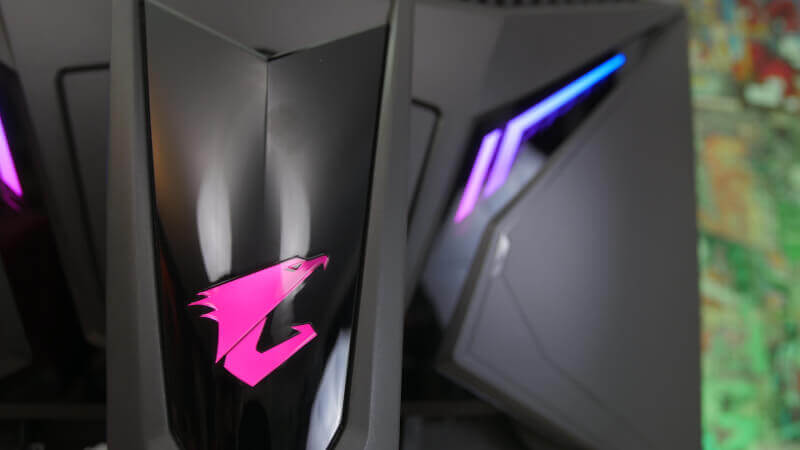
We’ll be checking out the Aorus FI27Q today, which Aorus claims to be the first tactical gaming monitor in the world. What exactly they mean by this is a bit unclear. It’s also not quite clear how Aorus can ascribe this title to more than just one of their monitors.
In our video below, we give you a quick overview of the Aorus FI27Q and what it has of features. Note that the video is in Danish.
Specifications
The Aorus FI27Q is a 27-inch monitor with a resolution of 2560x1440. It features an IPS panel with a refresh rate of 165 Hz and a response time of 1 ms. That is, however, an MPRT spec, and not the more traditional GtG, which makes me a bit skeptical towards that 1 ms benchmark.
The panel covers 95% of the DCO-P3 color spectrum, and according to Aorus, this is a 10-bit display, but that’s not entirely the case since it’s 8-bit + FRC, which they also “mention later”. You have to dive into the specifications in order to find this bit of information. So if you go with just the box specifications, you’ll be misled since this display is in fact not truly 10-bit.
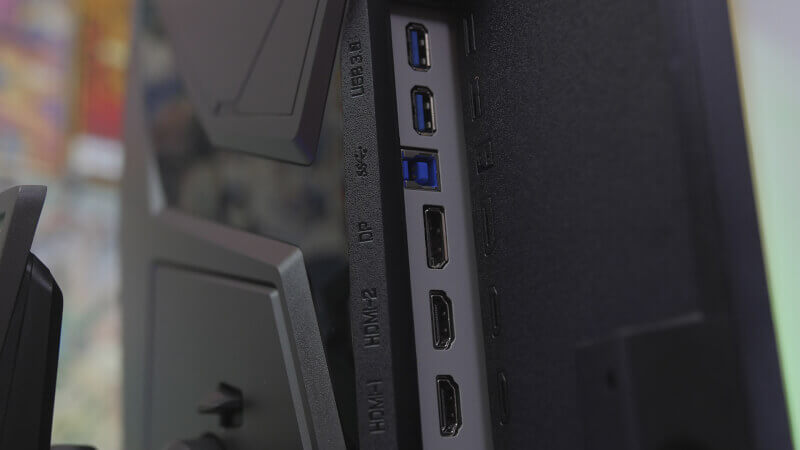
The monitor is also branded as an HDR monitor, but as is also the case with most other PC monitors, it is HDR400, which is a very light version of HDR, to say the least.
In terms of connectivity, the Aorus FI27Q offers two HDMI ports and a single DisplayPort. There’s also passthrough for microphone and audio out, as well as a USB 3.0 hub with two ports.
The Design
Aorus has opted for a subtle design philosophy for their monitors, which, to me personally, is a valued practice. On the front, there’s not really much to note other than an Aorus logo at the bottom right above a small power diode. The bezel is made in a dark gray plastic material, and the edges are really thin across the top and sides, but a bit beefier at the bottom.
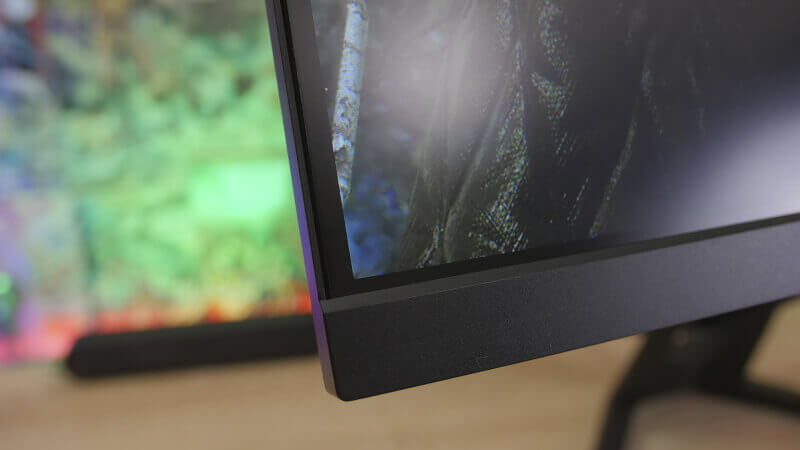
The physical bezel might be a bit misleading, though, since there is a black border on the screen itself that runs along the entire border of the panel. This also means that there is a total of 8 mm from the very edge to where the image begins. Overall, it still looks great, and it isn’t that big of an eyesore.
We have even more stuff going on, on the back. Here, we find some RGB zones that will sync up with RGB Fusion 2.0. There are two symmetrical areas on the monitor, and one on the stand. For most people this won’t really matter much since it won’t be visible if you place the monitor against a wall, and therefore it can seem a bit redundant.
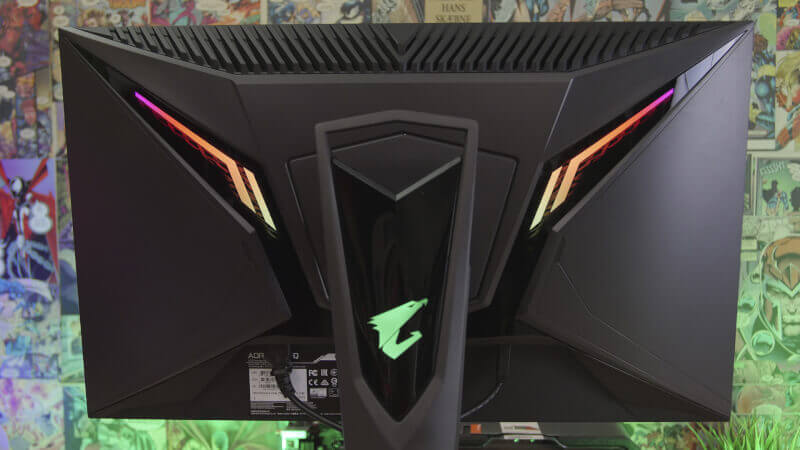
However, should you happen to place the Aorus FI27Q some place that will allow for the lights to be seen, it’s a fine little added detail. It looks visually pleasing and the RGB lights can of course be controlled so that it will be in sync with whatever other RGB lights you have on.
The stand that comes with the Aorus FI27Q is made from a robust metal and makes the monitor very stable. You have the option of adjusting the height, tilt and rotation, and you can also go with a vertical setup, if that’s what you need. The Aorus FI27Q is a very flexible monitor in that sense.
If you desire to place the Aorus FI27Q on a wall, you also get that option with the support of standard VESA brackets.
Testing the Aorus FI27Q
Keeping in mind that this is primarily a gaming monitor, I’ve of course mainly focused on testing the Aorus FI27Q in various games. Still, there was also time for some casual desktop use as well.
My immediate impression of the Aorus FI27Q is a very positive one. Out of the box, the Aorus FI27Q comes with good colors and the combination of the 2560x1440 resolution and the size gives you a sharp image with a high pixel density.
The IPS panel ensures a good color reproduction and good black levels, which will suit the needs of most users. Aorus specifies that the Aorus FI27Q gaming monitor can handle 10-bit colors, but when you get into it, you’ll quickly find out that the panel is in fact 8-bit + FRC. This means that it is not a true 10-bit panel. The difference, however, isn’t directly noticeable, unless you actually measure it. Still, it’s a bit misleading to write 10-bit on the outside of the box, when that is in fact not really what you’ll be getting.
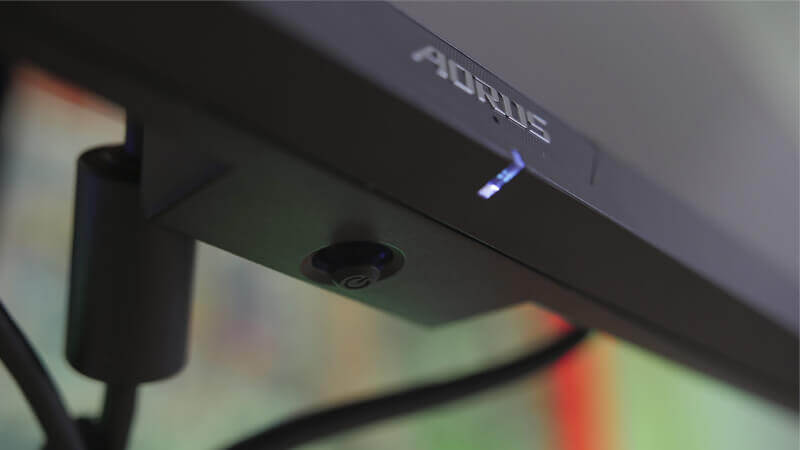
The settings of the monitor can be adjusted directly on it via a small joystick situated at the bottom of the screen. It gives you access to a range of useful settings, and you’ll be able to customize most things, including what shortcuts you wish to have quick access to.
On top of that, you can also download the Aorus OSD Sidekick app, which lets you do all of this directly via your desktop. This makes it much easier to adjust the settings and change the profiles of the monitor.
It’s also possible to set up your own profiles, and bind these to individual applications. This will change the profile of the monitor automatically when you run certain programs or games.

Aorus also provides further options via their Dashboard. Here, we can monitor the whole system, including CPU and GPU temperatures, and FPS counts without the need of any additional software. The added benefit of these options is that they are hardware settings, and therefore won’t be recognized as third party overlays in games.
You can also enable timers, or crosshairs, if you are so inclined.
On the technical side there is also the option of Aim Stabilizer, which will help reduce some of the motion blur that you might encounter in some games. This way, you’ll have a more clear image that might improve your aiming capability when gaming. It’s essentially just a version of the Ultra Low Motion Blur (ULMB) technology. During my testing, it seemed to work just fine, and it was particularly noticeable when testing in Blur Buster’s UFO test. It wasn’t as easy to spot in actual games as things move really fast and you have to keep watch over many things at the same time.
The downside of Aim Stabilizer, however, is that you get a much darker image when it’s enabled. That’s because of the way that Aim Stabilizer (and ULMB) works. Between every frame, a black frame is inserted, and this leads to the overall image appearing darker. This meant that I, without a doubt, preferred having Aim Stabilizer disabled since I basically found the image to be too dark otherwise.
FreeSync/G-Sync
The Aorus FI27Q comes with FreeSync, which ensures a variable frame rate, and in conjunction with Nvidia’s recent driver updates, and newfound open-mindedness towards FreeSync monitors, it can be used with both AMD and Nvidia graphics cards.
The Aorus FI27Q is on Nvidia’s list of G-Sync compatible monitors, and it immediately appeared in Nvidia’s desktop control panel. I did have a bit of trouble getting it to work to begin with. However, this was remedied with a firmware update of the monitor.
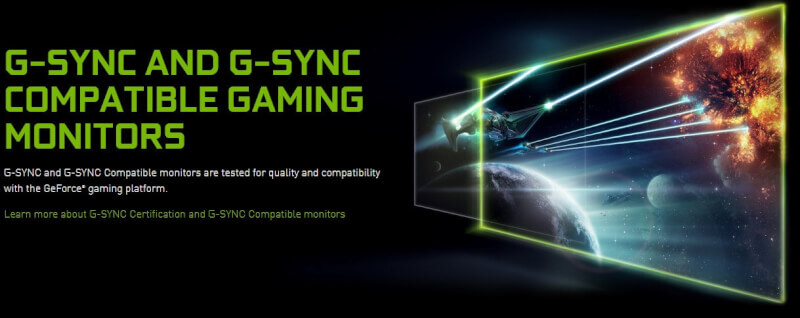
So, if you end up acquiring this monitor, do yourself the favor of checking its firmware version. Everything lower than F03 should be updated. Especially if you run with an Nvidia graphics card.
After the update, everything was sorted out and worked fine. I got a smooth gameplay experience free of screen tearing, on both AMD and Nvidia based graphics cards.
ANC
Aorus has, in their series of so-called tactical monitors, included a feature, where we, with the use of a built-in microphone on the monitor, have the option of active noise cancellation. This does require that you run your sound through the inputs provided on the monitor.
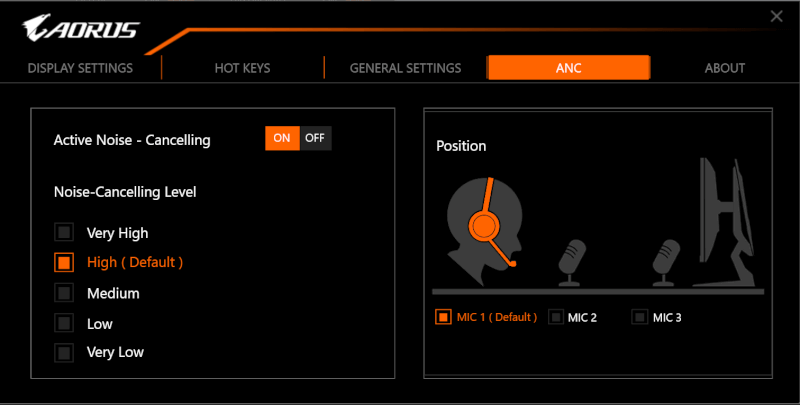
I haven’t tested this directly on the monitor, but I was given a demonstration of this at CES earlier this year. It does make an audible difference, but I still consider it mostly a PR move. If one is serious when it comes to sound quality in relation to, for instance, streaming then you’ll be much better off by investing in some good sound hardware, such as a good microphone, instead of having everything be dependant on a solution provided by your monitor.
HDR
In terms of HDR, my verdict is pretty instant and straightforward. Forget everything about HDR on the Aorus FI27Q. It features HDR400, and this should, in my book, never have been an official standard of HDR to begin with. It’s miles away from the HDR experience you’ll get with HDR10, which you’ll see on newer TVs with “real” HDR.
HDR400 lacks some of the fundamental features that makes a world of difference when it comes to HDR. There’s no local dimming, no full array backlight and we are also quite far from achieving a peak brightness of 600 nits or more, which is essential when it comes to rendering high dynamic range.
I did try out the HDR feature of this monitor, but I with no doubt find the image better when it’s turned off. The feature made the image look flat and grayed out, which to me looked more boring than that of the standard version.
Once again, the addition of HDR is mostly a PR move rather than a real feature. This is a good segway to my other semi-large issue with the Aorus FI27Q. It doesn’t really have to do with the monitor itself, but rather the way that Gigabyte/Aorus promotes it.
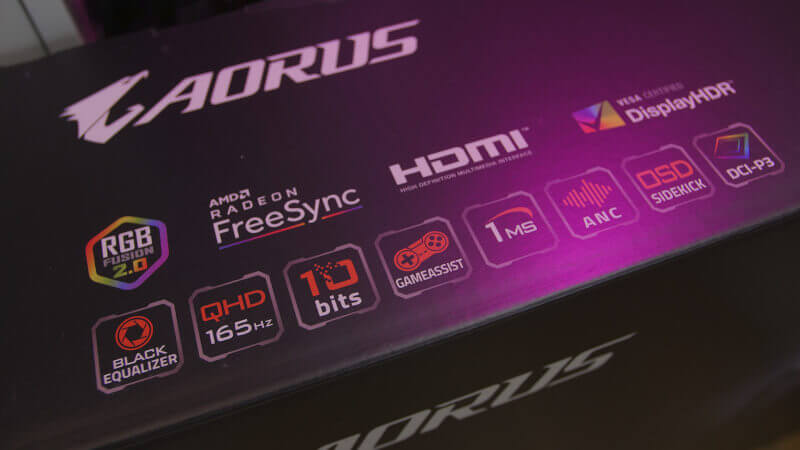
If you are just looking at the box on the shelf at your local store, everything looks very impressive. You get HDR, 10-bit color depth and 1 ms response times. The problem is that these specifications are largely misleading, and do not truly reflect the product that you as a customer will be getting.
I’ve already shared my thoughts on the HDR implementation, and I also covered the 10-bit color, which is quite a claim made by Aorus.
In terms of the 1 ms response time, this is also quite misleading since most people will most likely not experience this, and especially not if they run it at the full 165 Hz that it is capable of.
IPS panels are typically not the fastest panels on the market, and it’s the panel type that has been the slowest in achieving fast response times. Therefore, they haven’t been ideal for gaming for quite a long time.
It certainly has improved over time, and I didn’t encounter issues at all during my testing. There were no obvious cases of ghosting, which can be seen on monitors with low response times. I did see a small amount of it when I took a really close look, but it wouldn’t be something that I’d notice under normal circumstances. So, the Aorus FI27Q did a great job.
Aorus specifies 1 ms of response time, but it’s an MPRT benchmark, and not the traditional GtG, which means that this score cannot be directly compared to other monitors, which is quite an annoyance. GtG is measured by seeing how fast any given pixel can switch between two colors. MPRT indicates for how long any given pixel is visible, and that’s two different things that the manufacturers are using for the same purpose, which is misleading and confusing for the consumers. If MPRT should be used, it should be done in addition to GtG so both values specified and can be compared individually.
An MPRT benchmark can also be influenced by other things, for example the use of Ultra Low Motion Blur technology, or as Aorus has dubbed it with the FI27Q: Aim Assist. As I mentioned earlier, it comes at a cost, in that it will darken the image, and you cannot use FreeSync or G-Sync at the same time either.
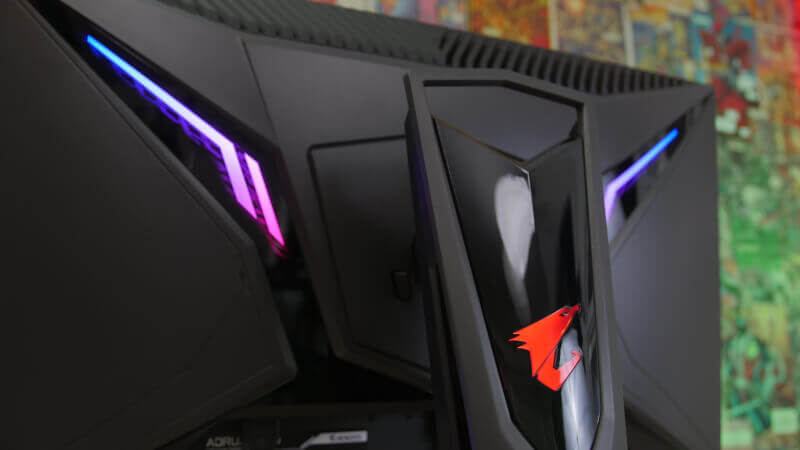
So, in order to achieve a 1 ms MPRT benchmark score, you need to make use of these tricks, and that means that you will have to let go of some other features.
In reality, we are probably quite a bit from reaching a response time of 1 ms. Even faster TN panels, at 144 Hz, will struggle to reach lower response times than 2.5 ms (GtG), whilst some of the faster IPS panels will be around 6.4 ms at 165 Hz.
I don’t have the necessary tools at hand to measure these things, so I will rely on other sources for these numbers. But the main point remains. One should always stay critical towards the values that the manufacturers specify for their products. Often, these numbers reflect theoretical configurations, in which the stars are also aligning, and as such, they aren’t representative of what you’ll experience when using the product as a consumer.
This was a longer rant than what I had intended, but I do find that it is worth mentioning since I find Aorus, with this monitor in particular, have gone a bit too far when providing the specifications, and in other words, they promise more than what this monitor will actually deliver, in reality.
Price
At the time of this writing, the Aorus FI27Q is priced at around $549.99. It is a reasonable price for a monitor packing these features, and it doesn’t find itself in either the lower or higher end of the price range of such a monitor. If one can settle with a 144 Hz monitor, Aorus also offers the AD27QD, which packs more or less the same specs, but just with a 144 Hz panel instead.
Conclusion
With all that said and done, I still had a quite good experience with the Aorus FI27Q.
It’s a gaming monitor that provides great image quality with good black levels and good colors. It gives a good gaming experience and it will also do really well for media consumption.
It comes with a lot of options in terms of configuration and customization directly on-screen, and it’s made even easier with the OSD Sidekick app, which you’ll have access to directly from your desktop. It’s a real pleasure to play around with this app, and it gives you a lot of options, if you are one that enjoys taking the time to get all the settings just right and creating your own profiles.
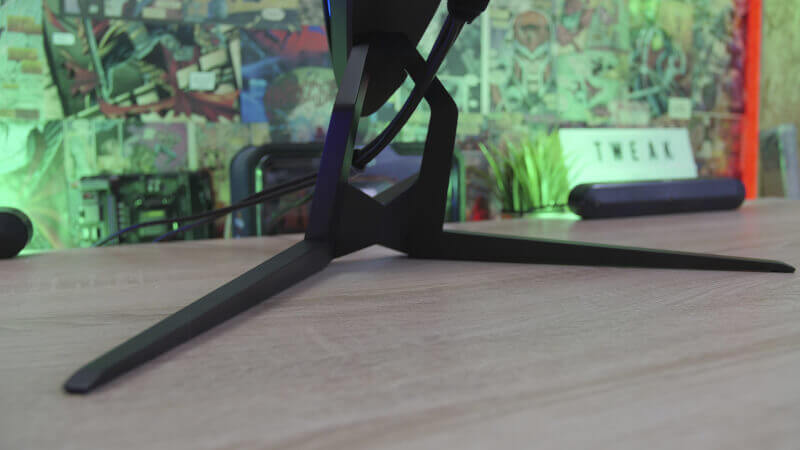
One should, however, completely disregard things such as HDR, which in my view offers nothing of value when provided in the form that it has been here. This is, however, a general problem with gaming monitors these days. The Display HDR400 standard is being promoted heavily by manufacturers, when it only really deserves to be forgotten, if you ask me. It would have been more fitting of Aorus to not make use of such marketing schemes.
There’s quite a bit of this marketing fluff going on here, including the ANC and RGB lights, which doesn’t do anything to improve the core functionality of a good gaming monitor, but merely is there as a form of bling. It’s of course up to the individual consumer to decide if these things hold any value, but personally, I feel that the focus should be on making a good monitor with features that contribute to this purpose, and not on various bling.
I feel that Aorus deserves a kick on the shin with all these marketing gimmicks, but since it doesn’t really influence the performance of this monitor, and its technical capabilities, it won’t influence my final verdict of this monitor.
If you disregard all this marketing nonsense from Aorus, the Aorus FI27Q is overall a really fine monitor.
You get a monitor that will ensure you some awesome gaming experiences, as long as you have the hardware to take advantage of the resolution and the many hertz. I find that 2560x1440 with high refresh rate, along with ultra wide, is a sweet spot when it comes to modern gaming. It does require some decent hardware, though, if you want to also play the big modern titles.
We arrive at a final score of 9 for a really nice monitor that comes reasonably priced.
Pros:
The resolution and refresh rate give you plenty of options
Good adjustment and settings options
Nice IPS panel
The OSD Sidekick app is great
Cons:
A bit too much marketing fluff and redundant features
HDR400 is forgettable

Latest monitor
-
24 Marmonitor
-
24 Janmonitor
ZOWIE XL2586X+ 600Hz Gaming Monitor
-
30 Octmonitor
ASUS ROG Swift PG32UCDP
-
22 Augmonitor
New ASUS ROG monitors at Gamescom
-
15 Julmonitor
ASUS ROG Strix OLED XG27AQDMG
-
04 Julmonitor
MNN Portable Monitor
-
05 Junmonitor
Samsung ready with smaller Odyssey screens
-
10 Maymonitor
AORUS FO32U2P - 4K OLED Gaming
Most read monitor
Latest monitor
-
24 Marmonitor
ASRock PGO32UFS
-
24 Janmonitor
ZOWIE XL2586X+ 600Hz Gaming Monitor
-
30 Octmonitor
ASUS ROG Swift PG32UCDP
-
22 Augmonitor
New ASUS ROG monitors at Gamescom
-
15 Julmonitor
ASUS ROG Strix OLED XG27AQDMG
-
04 Julmonitor
MNN Portable Monitor
-
05 Junmonitor
Samsung ready with smaller Odyssey screens
-
10 Maymonitor
AORUS FO32U2P - 4K OLED Gaming






